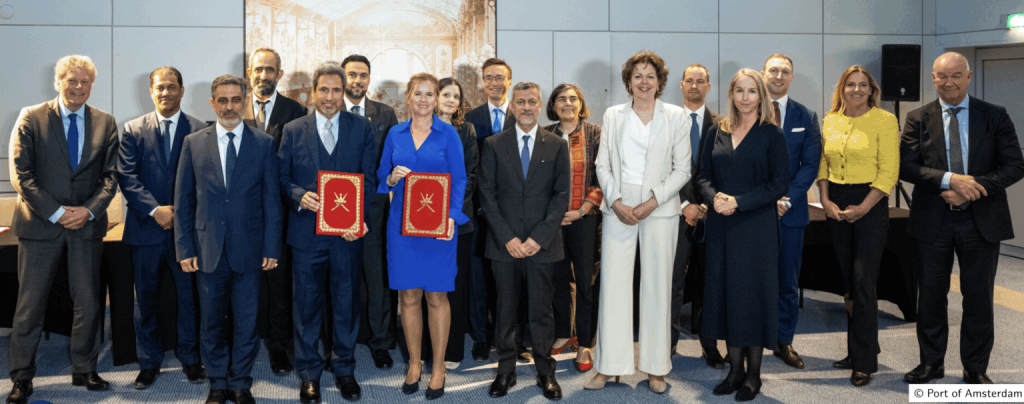As the race for hydrogen import infrastructure intensifies, Hamburger Hafen und Logistik AG (HHLA) has aligned itself with ten partners to establish what is being touted as the world’s first liquid hydrogen import corridor—from Oman to Europe. Anchored by the Port of Duqm and stretching across Amsterdam to the Port of Duisburg and Hamburg, the initiative signals a strategic turn toward maritime transport of liquefied hydrogen (LH2) as Europe seeks to secure scalable green energy imports outside of pipeline-dependent routes.
The April 2025 signing of the Joint Development Agreement—coinciding with the Sultan of Oman’s state visit to the Netherlands—builds on Oman’s previously announced hydrogen export ambitions and existing partnerships through Hydrom, OQ, and the Port of Amsterdam. However, the corridor’s technical and commercial viability hinges on addressing the unresolved bottlenecks surrounding liquefaction, transport, and end-user distribution.
Liquid hydrogen, with its -253°C boiling point and high energy density by mass, is viewed as a promising vector for sectors such as aviation, maritime, and niche industrial clusters. But unlike ammonia or LOHCs (liquid organic hydrogen carriers), LH2 lacks a mature, scalable value chain. According to a Fraunhofer CML study authored by Patrick Zimmermann, Germany will need significant seaborne imports to meet its hydrogen targets, with Hamburg positioned as a critical intake node. Still, questions remain around the energy and cost intensity of liquefying and maintaining hydrogen at cryogenic temperatures over long distances.
The proposed corridor does more than promise a single maritime route. It represents a pan-European integration challenge. Once offloaded in Amsterdam, hydrogen will be routed through HHLA’s intermodal logistics network by rail, inland vessels, and pipelines, including Gasnetz Hamburg’s HH-WIN system. This logistical overlay is aimed at reaching small to medium-sized industrial and chemical customers, sectors that have yet to demonstrate broad readiness for hydrogen adoption at commercial scale.
From a supply perspective, Oman is positioning itself as a long-term hydrogen exporter, with the Port of Duqm slated for the development of liquefaction facilities and LH2-specific port infrastructure. But production scale-up is contingent on the build-out of renewable capacity, electrolysis infrastructure, and alignment with international certification schemes to verify origin and carbon intensity. Without those in place, large-scale offtake agreements may be delayed, undermining corridor utilization rates.
CFO Annette Walter underscored HHLA’s goal to achieve climate neutrality by 2040, with hydrogen seen as a pillar of that strategy. Yet while the rhetoric points to future energy independence, execution will require coordination across jurisdictions, technologies, and regulatory frameworks—many of which are still in flux.
Moreover, while hydrogen imports by ship avoid the geopolitical constraints of pipeline routes, they introduce new vulnerabilities. LH2 ships, which require double-hulled vacuum-insulated tanks and bespoke handling systems, are still in the early stages of deployment. Port retrofitting, safety regulations, and insurance frameworks are all in development, with capital expenditures projected to exceed those of ammonia-based alternatives.
Ultimately, the corridor’s success will rest not only on technical implementation but also on resolving fundamental demand-side uncertainties. Without clear end-user commitments or competitive pricing mechanisms, liquid hydrogen risks following the trajectory of earlier energy infrastructure projects that outpaced market readiness. As Europe doubles down on hydrogen imports to meet climate targets, initiatives like this one will either validate or challenge the continent’s logistical and commercial readiness for a hydrogen-based economy.
